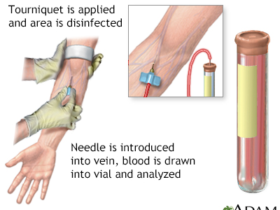Introduction to Grade 1 Fatty Liver
Grade 1 fatty liver, also known as mild fatty liver disease, is the initial stage of non-alcoholic fatty liver disease (NAFLD), characterized by fat accumulation in the liver cells. This early stage is generally considered benign and is often asymptomatic, meaning that most individuals with grade 1 fatty liver are unaware of its presence. However, it can be a significant warning sign of metabolic imbalances and, if left unaddressed, may progress to more severe forms of liver disease. Understanding grade 1 fatty liver is crucial for early intervention and preventing the escalation of more severe health issues.

Causes and Risk Factors
The primary cause of grade 1 fatty liver is the accumulation of triglycerides within liver cells. This accumulation occurs when the balance between the fat entering the liver and the liver’s ability to metabolize and export fat is disrupted. Several factors can contribute to this imbalance, including poor diet, obesity, insulin resistance, and metabolic syndrome. High consumption of sugar and refined carbohydrates, combined with a sedentary lifestyle, significantly increases the risk of developing fatty liver disease. Additionally, certain genetic predispositions can make some individuals more susceptible to fat accumulation in the liver.
Obesity is one of the most significant risk factors for grade 1 fatty liver. Excess body weight, particularly in the abdominal region, is closely linked to fat deposition in the liver. Insulin resistance, often associated with obesity, further exacerbates the problem. When the body’s cells become resistant to insulin, blood sugar levels rise, prompting the liver to convert excess sugar into fat. This process leads to fat accumulation within liver cells, marking the onset of fatty liver disease. Furthermore, individuals with type 2 diabetes or high cholesterol are at increased risk of developing NAFLD, including its early stage, grade 1 fatty liver.
Symptoms and Diagnosis
One of the challenges in managing grade 1 fatty liver is its asymptomatic nature. Most individuals do not experience noticeable symptoms, making it difficult to detect without medical intervention. People may sometimes experience fatigue or mild discomfort in the upper right abdomen, but these symptoms are often non-specific and easily overlooked. Due to the lack of overt symptoms, grade 1 fatty liver is frequently discovered incidentally during routine medical examinations or imaging studies for unrelated issues.
Diagnosing grade 1 fatty liver typically involves a combination of medical history, physical examination, blood tests, and imaging studies. Blood tests may reveal elevated liver enzymes, such as alanine aminotransferase (ALT) and aspartate aminotransferase (AST), which can indicate liver inflammation or damage. However, these enzyme levels are not always elevated in early-stage fatty liver. Imaging techniques such as ultrasound, computed tomography (CT), or magnetic resonance imaging (MRI) are more reliable in detecting fat accumulation in the liver. Ultrasound is the most common method due to its accessibility and non-invasive nature. In some cases, a liver biopsy may be performed to confirm the diagnosis and assess the extent of liver damage.
Treatment and Management
The cornerstone of managing grade 1 fatty liver is lifestyle modification. Since the condition is closely linked to diet and physical activity, adopting a healthier lifestyle can significantly improve liver health and prevent disease progression. Weight loss is often the primary goal for overweight or obese individuals. Even a modest weight loss of 5-10% of body weight can reduce liver fat and improve liver function. A balanced diet rich in fruits, vegetables, whole grains, lean proteins, and healthy fats is essential. Reducing the intake of sugar, refined carbohydrates, and saturated fats can help decrease liver fat accumulation.
Regular physical activity is another crucial component of managing grade 1 fatty liver. Engaging in aerobic exercises such as walking, jogging, swimming, or cycling for at least 150 minutes per week can help reduce liver fat and improve overall metabolic health. Strength training exercises also increase muscle mass and improve insulin sensitivity. In addition to diet and exercise, avoiding alcohol and managing underlying conditions such as diabetes, high blood pressure, and high cholesterol are essential steps in controlling fatty liver disease.

Monitoring and Follow-Up
Once diagnosed with grade 1 fatty liver, regular monitoring, and follow-up with a healthcare provider are essential. Periodic blood tests to check liver enzyme levels and imaging studies to assess liver fat content can help track the condition’s progress. Monitoring is crucial to ensure that the disease does not progress to more severe stages, such as non-alcoholic steatohepatitis (NASH) or cirrhosis. Early intervention and consistent follow-up can prevent complications and improve long-term outcomes.
Medications may sometimes be prescribed to manage underlying conditions or reduce liver inflammation. For instance, medications to control diabetes, lower cholesterol, or manage high blood pressure can indirectly benefit liver health. Additionally, emerging treatments targeting specific pathways involved in fat metabolism and inflammation are being investigated and may offer new options for managing fatty liver disease in the future.
Importance of Early Detection and Prevention
Early detection and intervention are critical in managing grade 1 fatty liver and preventing its progression to more severe stages. Since the condition is often asymptomatic, individuals at risk should undergo regular health check-ups, especially if they have risk factors such as obesity, diabetes, or metabolic syndrome. Educating the public about the importance of liver health and the risk factors for fatty liver disease can encourage proactive measures and early medical consultation.
Prevention strategies for grade 1 fatty liver focus on maintaining a healthy weight, adopting a balanced diet, and engaging in regular physical activity. Public health initiatives promoting healthy lifestyles, reducing obesity rates, and increasing awareness about the dangers of excessive sugar and fat consumption can play a significant role in preventing fatty liver disease. By addressing the root causes and promoting healthy habits, the incidence of grade 1 fatty liver and its progression to more severe liver diseases can be significantly reduced.

Conclusion
Grade 1 fatty liver, or mild fatty liver disease, is an early and often asymptomatic stage of non-alcoholic fatty liver disease. Understanding the causes, risk factors, and management strategies for grade 1 fatty liver is essential for early intervention and prevention of disease progression. Lifestyle modifications, including weight loss, a balanced diet, and regular physical activity, are the cornerstone of managing this condition. Regular monitoring and follow-up with healthcare providers can help track progress and ensure the disease does not advance to more severe stages. Early detection and public awareness are crucial in preventing grade 1 fatty liver and promoting overall liver health. By taking proactive measures and adopting healthy habits, individuals can significantly reduce their risk of developing fatty liver disease and its associated complications.
Also, Read the following: how to reduce body heat.














Got a Questions?
Find us on Socials or Contact us and we’ll get back to you as soon as possible.